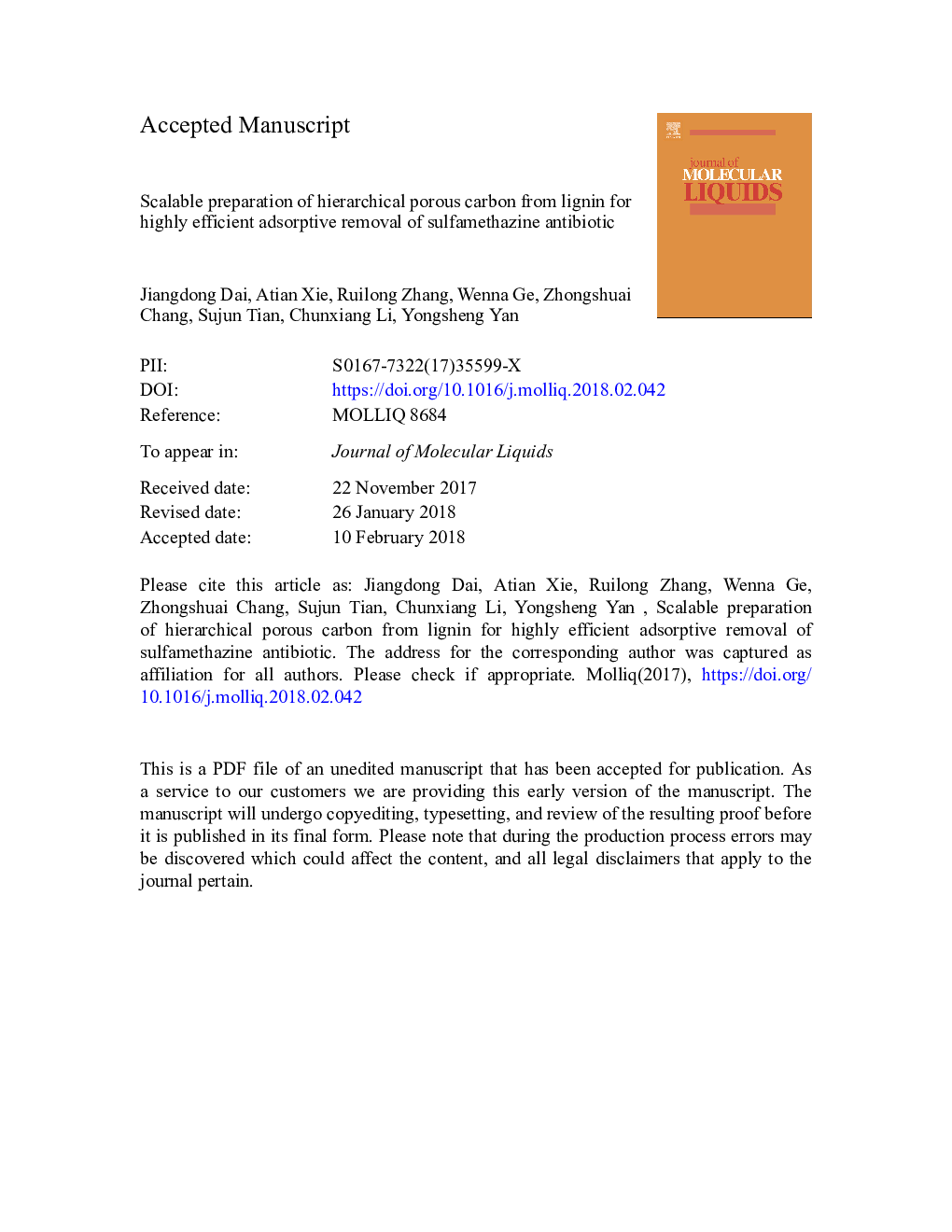| Article ID | Journal | Published Year | Pages | File Type |
|---|---|---|---|---|
| 7842794 | Journal of Molecular Liquids | 2018 | 31 Pages |
Abstract
In order to efficiently remove sulfamethazine (SMZ) antibiotic from wastewater, in this work, we first described a facile and scalable synthesis of hierarchical porous carbon using industrial by-product sodium lignosulfonate (SLS) as raw source and potassium hydroxide as inorganic template and chemical activator, by a self-templating and in-situ activation method. The Lignin-derived hierarchical porous carbon obtained at an optimal mass ratio of SLS and alkali of 1:3 (LHPC-3) exhibited a largest specific surface area of 2235 m2 gâ1 and pore volume of 1.512 cm3 gâ1. LHPC-3 possessed a very high saturated monolayer adsorption capacity of 854.7 mg gâ1 at 288 K. The pseudo-second-order rate model described the adsorption kinetics data. It was found that this carbon could be also effective in the high salt environment. Physical adsorption played in an important role in the process of capture SMZ molecules from water. This hierarchical porous carbon had good stability and regeneration property, providing the possibility for the practice application. We gave a novel, simple and effective technique to obtain high-performance hierarchical porous carbon for various use, especially for wastewater treatment.
Related Topics
Physical Sciences and Engineering
Chemistry
Physical and Theoretical Chemistry
Authors
Jiangdong Dai, Atian Xie, Ruilong Zhang, Wenna Ge, Zhongshuai Chang, Sujun Tian, Chunxiang Li, Yongsheng Yan,
